Solid waste management tour in Kitakyushu
Kitakyushu-city is the advanced city of solid waste management in Japan. The comprehensive
Solid waste management system and Recycling technologies can be learned from waste
collecting procedure at household to the final stage of waste treatment such as incineration,
landfill and recycling.
What to learn
Comprehensive Solid waste management system and Recycling technologies
Tour conditions
The tour is the tailor-made study tour exclusively for your group
Number of participant : from 5 to 40
Tour duration : 2 days ( one-day tour can be arranged if required )
Study tour planning and arrangement :
Tour guide and interpreter (English ) : Japan KYUSHU Tourist
Transportation : a chartered vehicle
Itinerary
Day 1
8:30 leave hotel in Kitakyushu
Eco Town Center
Hiagari Recycling Center for waste cans and bottles
lunch
Plastic PET Bottle recycling / Nishi-Nippon PET Recycling
Citizen community Center
17:30 arrive Hotel in Kitakyushu
Day 2
8:30 leave hotel in Kitakyushu
Waste paper recycling / Kyushu Seishi
Higashida No.1 Blast Furnace
Lunch
Melting Furnace / Sin-Moji Plant
Sightseeing Mojiko Retro
17:30 arrive Hotel in Kitakyushu
Option : the following sites can be arranged as an option.
Hibikinada Biotope
Fukuoka Hydrogen Station
Oki Recycling Center Kururun
Where to visit and what to learn
Day 1
Eco Town Center
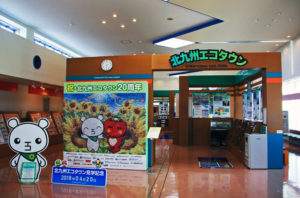 |
Eco Project information center that supports the Eco-town. It introduces
initiatives and activities implemented in Eco-town to encourage people
to proactively used the facility for such activities as environmental study
sessions and interaction amongst visitors.
|
Hiagari Recycling Center for waste cans and bottles
 |
The Recycling Center where separates cans, bottles and PET bottles
collected in Kitakyushu-city for recycling. And also paper containers and
Styrofoam food packs are separated at this facility.
|
Plastic PET Bottle recycling / Nishi-Nippon PET Recycling
 |
PET (polyethylene terephthalate) bottles are sorted by municipalities
and recycled into pellets and flakes, which can be used as raw materials
for polyester fibers and egg cartons.
|
Citizen community Center
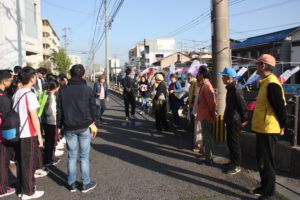 |
Introduce the Duties of Citizen and Self-government organization for
recycling & waste management.
|
Day 2
Waste paper recycling / Kyushu Seishi
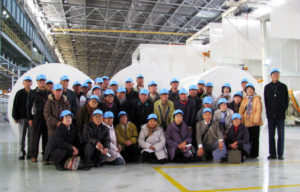 |
Refined waste papers is recycled into toilet papers. Sludge generated
during the toilet paper production process is used to produce a foaming
inhibitor used by steel works.
|
 |
Only the Blast Furnace in the world which preserved as it was and here
is. It contributed greatly to the development of the Japanese steel industry
and was used until 1972, and has been preserved just as it was.
Equipment and tools which were actually used are exhibited in the square,
and you can see the iron-making process from the raw material
(ore and coke)to production of pig iron.
|
Melting Furnace / Sin-Moji Plant
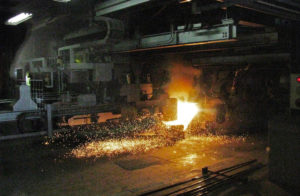 |
The collected waste including metals is melted at over 1,700 degree Celsius
in the Melting Furnace and then the melted slag and metals are discharged.
The slag is used as raw materials for pavement and bricks and the metals
are re-used for other steel products. The process and technology of the
Melting Furnace can be learned.
|
Mojiko Retro
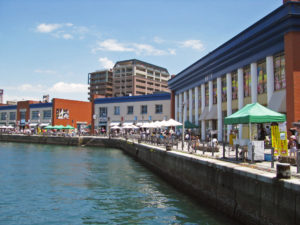 |
Dr. Albert Einstein awarded Nobel Prize in Physic visited Moji in 1922, and
he acclaimed that everything could see were Arts. The exotic district of
Mojiko Retro is visited by more than 2 million tourists a year. Moji-ko Port
flourished following its 889 designation as a Special National Port for
exporting coal and other products.
|
Options
Hibikinada Biotope
 |
Japan’s largest Biotope, the Paradise of creatures made over the year in the
waste disposal site. 237 kind of birds including circus spinouts listed on the
Japan’s endangered species and 284 kind of vegetation have been confirmed
in the Biotope of 41 hectares.
|
Fukuoka Hydrogen Station
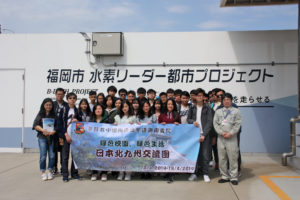 |
World’s first hydrogen station for vehicle to utilize the wastewater treated in
the Fukuoka Chubu Sewage Treatment Center. The process has been
developed as a result of the verification testing of technology for hydrogen
creation sourced from wastewater biogas.
|
Oki Recycling Center Kururun
 |
The biomass recycling facility that started operations in November 2006.
It takes kitchen waste from the town’s households and restaurants, along
with septic tank sludge and raw sewage, and uses a methane fermentation
process to turn it into a biomass that can be used for power generation.
After the fermentation, the digestive fluids are used as liquid fertilizer.
Furthermore, Oki Town was the second in the country to make a
zero-waste declaration, which it officially announced in March 2008 with
its Oki town Mottainai Declaration.
|
Home Our Services About us Contact us Terms and Conditions Privacy Policy
-
Featured tours, Study tours to Kyushu





















